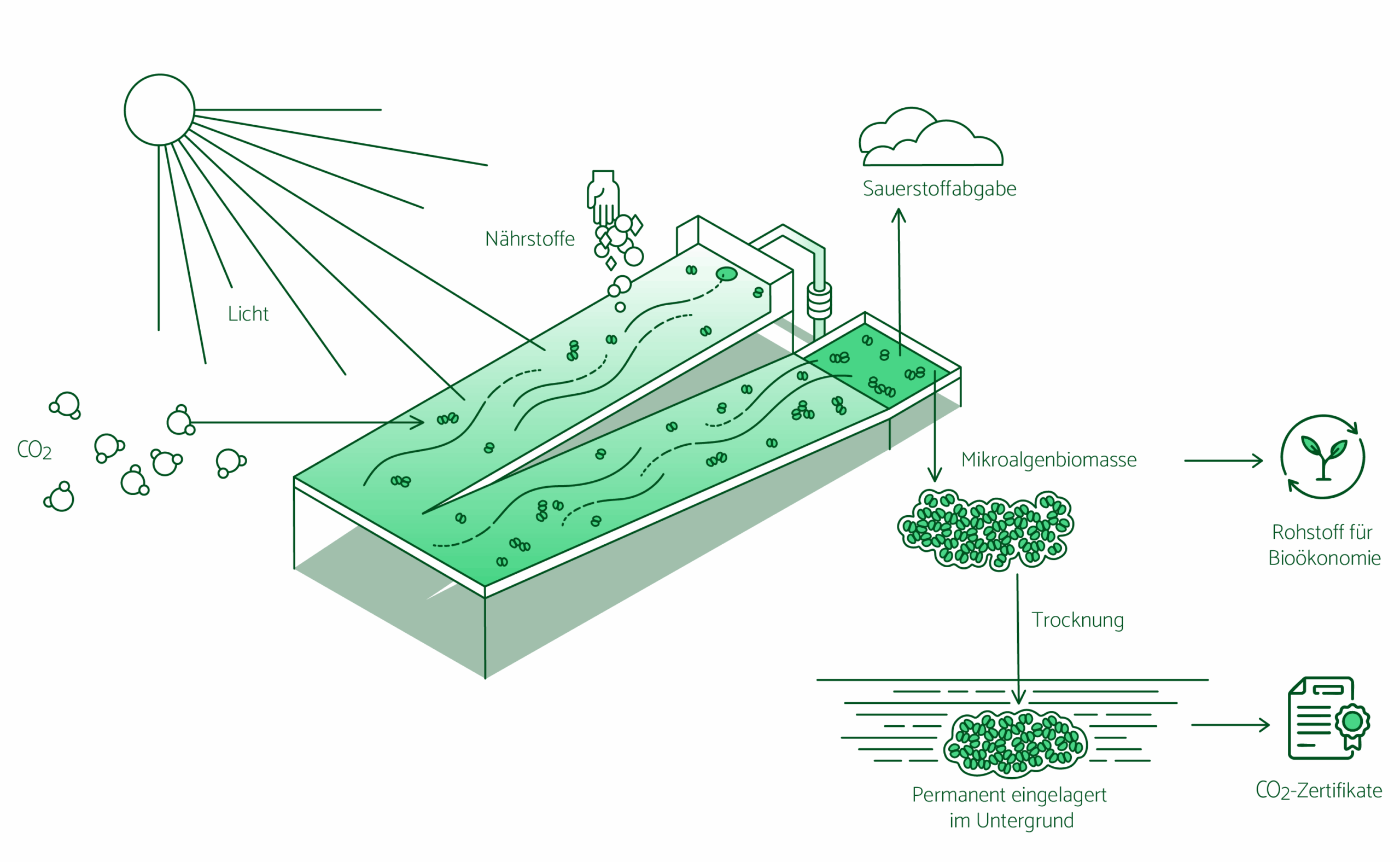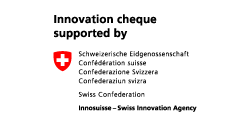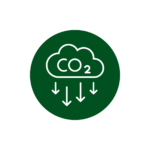
Why remove CO2?
To address climate change, almost all countries have set themselves carbon-neutral goals.
Drastically reducing CO2 emissions has priority, but it is not enough. Carbon Dioxide Removal (CDR) is a crucial factor to reach net zero emissions.

Nature-based technology
We remove CO2 from the atmosphere by producing biomass with microalgae.
The carbon bound by the microalgae can be permanently stored underground. In this case, our technology results in negative emissions.

CO2 Removal Certificates (CORCs)
Our carbon certificates are generated through the measurable removal of CO2.
CORCs are not a substitute for reducing emissions! Rather, they complement the climate strategy by addressing emissions that are difficult to avoid.

Microalgae Biomass
Biomass can also serve as a raw material for the bioeconomy.
Microalgae can be used as food or animal feed, and they can replace fossil-based raw materials as a sustainable resource. Applications include bioplastics, biofuels and natural dyes.
High-Quality Carbon Removal Credits

MESSBAR
Vor der Speicherung im Untergrund wiegen wir die Biomasse und messen ihren Kohlenstoffgehalt. So lässt sich exakt bestimmen, wie viel CO₂ der Atmosphäre entzogen wurde.
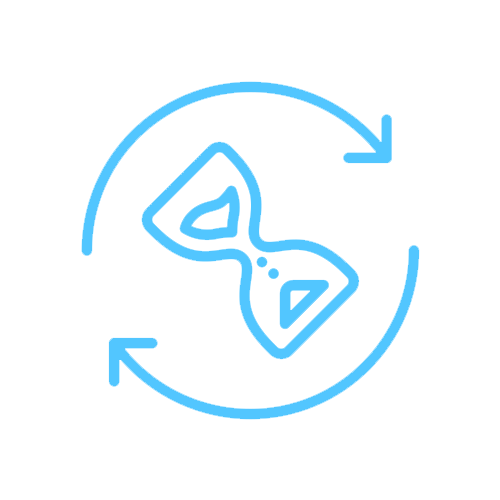
DAUERHAFT
Die langfristige Speicherung des gebundenen Kohlenstoffs ist zuverlässig und sicher. Die Biomasse bleibt aufgrund ihrer Zusammensetzung bei geeigneten Speicherbedingungen mehr als 1000 Jahre stabil.

VERIFIZIERBAR
Wir legen grossen Wert auf hohe Standards bei Überwachung, Berichterstattung und Verifizierung. Damit gewährleisten wir Transparenz und Nachprüfbarkeit unseres Prozesses.

ZUSÄTZLICH
Unser Prozess entzieht der Atmosphäre nachweisbar zusätzliches CO₂ in Ihrem Auftrag. Die resultierenden CO₂-Zertifikate sind nicht übertragbar. Doppelzählungen werden dadurch vermieden.

ENERGIEEFFIZIENT
Unser Prozess basiert auf der Photosynthese. Wir nutzen fast ausschliesslich Sonnenlicht als Energiequelle. Der technische Energiebedarf ist daher gering.

SKALIERBAR
Unsere Photobioreaktoren ermöglichen die hocheffiziente Produktion von Biomasse zur CO₂-Sequestrierung. Sie sind modular, skalierbar und Plug & Play-bereit für die Installation.
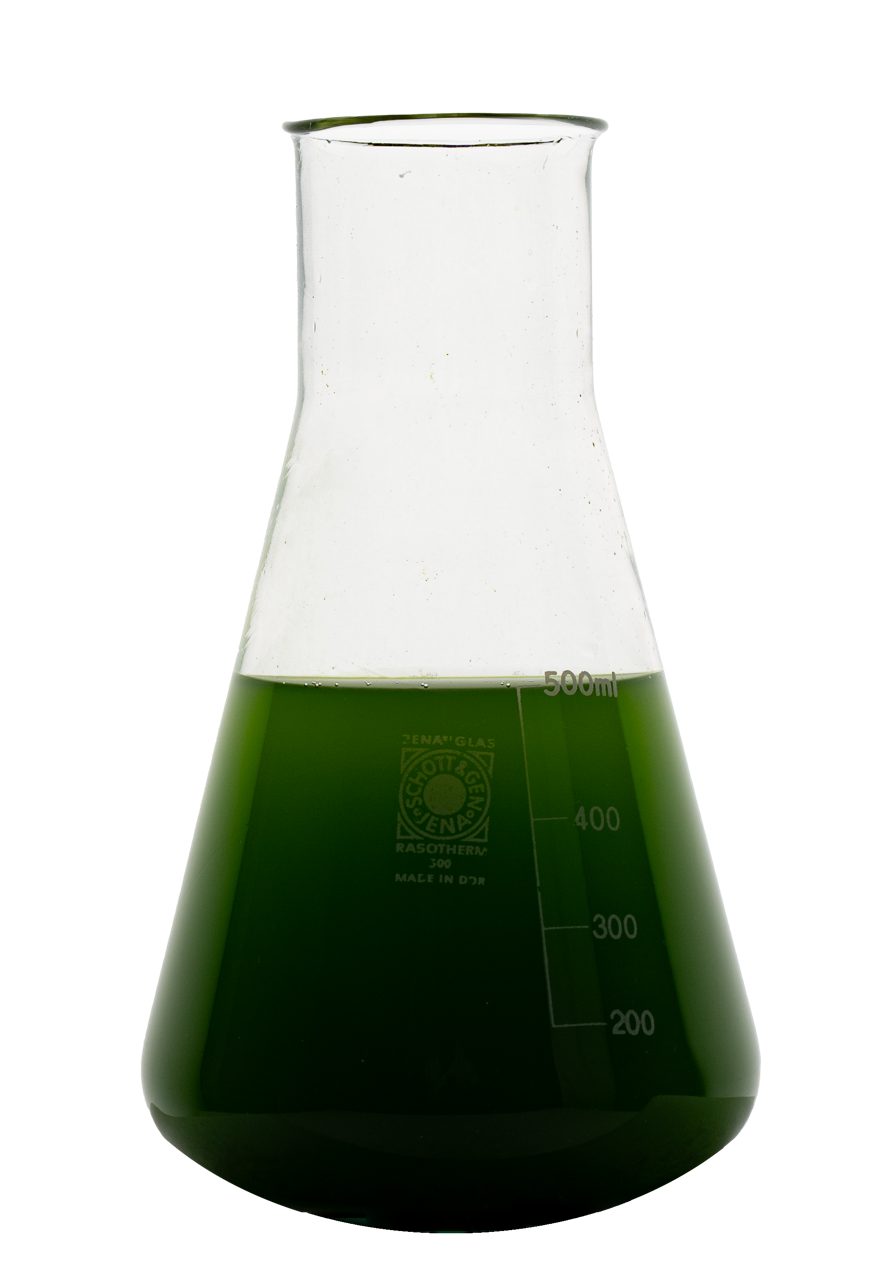
Why Microalgae?
Photosynthesis in algae plays a crucial role in the global carbon cycle, as it binds CO2 and converts it into biomass. Growing microalgae in warm water is the most efficient way to produce biomass.
Algae growth rates are up to 50 times higher than those of land plants. This makes them highly efficient CO2 sinks.
Scaling up carbon dioxide removal
With our photobioreactors, we have technically improved this process. As a result, we can remove CO2 from the atmosphere on a large scale using sunlight as the primary energy source.
News
Our Partners
Die Arrhenius AG ist ein Spin-off der Hochschule Luzern (HSLU). Wir werden von verschiedenen wissenschaftlichen Partner*innen und Förderorganisationen unterstützt.
Milliarden Tonnen CO2
Voraussichtliche globale fossile Kohlendioxid-Emissionen im Jahr 2024 (Global Carbon Budget).
Millionen Tonnen CO2
Emissionen, die allein die Schweiz bis 2050 jedes Jahr entfernen muss (Bundesamt für Energie).

